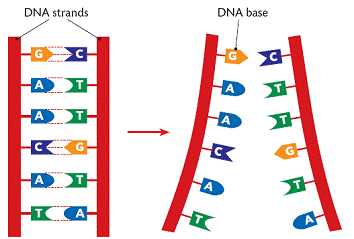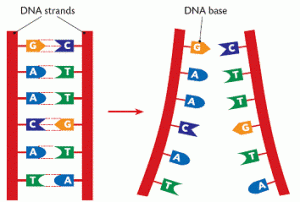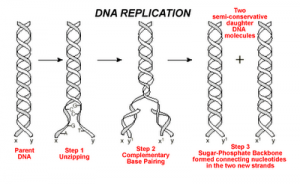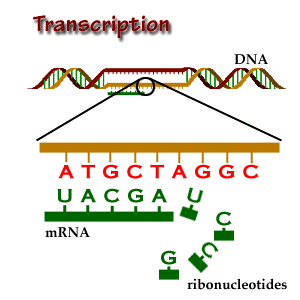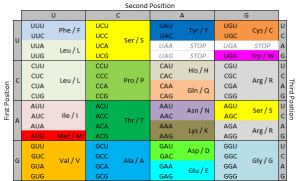Lyme Disease: CDC Recommended Diagnostics (part 2)
Diagnosis of Lyme disease is a complicated affair. Part of the complication is the way our immune system responds to Lyme disease, and part of it is the current tests available to test for infection.
An antigen is anything that generates an immune response inside your body. Borrelia spp., the causative agents of Lyme disease, are antigens. They enter your body, your immune system recognizes it as a threat, and generates a specific IgM in response to Borrelia. This IgM is present in your serum about a week after infection, and persists in good quantities until about 12 weeks after infection, with concentration of specific IgM peaking around 4-6 weeks.
About 4 weeks after infection, your body generates Borrelia spp. IgG. This change from making IgM to IgG is called seroconversion. This IgG persists in good quantities for about 9-10 months after infection. While both IgM and IgG titers decrease over time, they can persist in serum for years after infection is resolved.
The standard Lyme diagnostics look for IgM and IgG. To be honest, I was pretty surprised at the abundance of different Lyme diagnostics, including others that look at that antigen and PCR based tests. There are multiple types of tests, and for each type of test, there are multiple companies that make them. It is a bit of a hot mess. So let’s look at the CDC recommended testing first, and then I’ll get to the others.
The CDC recommends a two step process for diagnosing Lyme. The first step is an ELISA and the second is a Western blot.
The Lyme ELISA (enzyme linked immunoassay) tests look for IgM and/or IgG, the antibodies made in response to the infection. These tests are sensitive, meaning that almost everyone with Lyme will test positive IF TESTED FOUR WEEKS AFTER SYMPTOMS PRESENT. (Note: I saw the phrase “almost everyone with Lyme will test positive” in relation to ELISA testing for Lyme several times. This test is most likely to correctly identify positives after patients have seroconverted.) However, these tests are not that specific, so they will provide 5-7% false positives. So with this test, if you have Lyme, you are likely to get a positive result, but if you don’t have it, you might still get a positive result. If the ELISA test is positive, then blot testing is done to confirm the result. If the ELISA test is negative, then the blot is not run, and the patient is told they do not have Lyme disease.
Western blots look for proteins specific to the organism in question. Western blots for Lyme testing are usually called immunoblots. These tests look for the specific IgG and IgM. Like the ELISA, the blot for IgG is more accurate, but requires the patient to have seroconverted. Blots for IgM are more likely to give false positives, so people who don’t have Lyme disease may have a positive test. The CDC guidelines recommend only running IgM blots in the first four weeks of illness due to the higher risk of false positive.
A Western blot works by showing “bands” to demonstrate that particular antigens were found. The bands are visible to the person reading the result. In order for an IgM blot to be considered positive, two of three possible bands must be positive. In order for an IgG blot to be considered positive, five of ten possible bands must be positive.
Let’s review.
You have had symptoms for two weeks. Your IgM ELISA is positive. Your IgG ELISA is negative (because your body hasn’t made IgG yet for Borrelia spp.) Your IgM blot shows 3/3 bands. Your IgG blot is negative. You are diagnosed with Lyme disease.
You have had symptoms for two weeks. Your IgM ELISA is positive. Your IgG ELISA is negative (because your body hasn’t made IgG yet for Borrelia spp.) Your IgM blot shows 1/3 bands. Your IgG blot is negative. You are not diagnosed with Lyme disease.
You have had symptoms for two weeks. Your IgM ELISA is negative. Your IgG ELISA is negative (because your body hasn’t made IgG yet for Borrelia spp.) No blots are run. You are not diagnosed with Lyme disease.
You have had symptoms for six weeks. Your IgM ELISA is positive. Your IgG ELISA is positive. Your IgM blot shows 2/3 bands. Your IgG blot shows 5/10 bands. You are diagnosed with Lyme disease.
You have had symptoms for six weeks. Your IgM ELISA is negative. Your IgG ELISA is positive. Your IgM blot is negative. Your IgG blot shows 5/10 bands. You are diagnosed with Lyme disease.
You have had symptoms for six weeks. Your IgM ELISA is negative. Your IgG ELISA is positive. Your IgM blot is positive. Your IgG blot shows 4/10 bands. You are not diagnosed with Lyme disease.
You have had symptoms for six weeks. Your IgM ELISA is positive. Your IgG ELISA is negative. Your IgM blot shows 3/3 bands. Your IgG blot shows 4/10 bands. You are not diagnosed with Lyme disease.
So let’s talk about this two step process. It has been studied, a lot. The two step process was implemented in the mid-90’s due to the lack of specificity, meaning that people were being treated for Lyme disease who didn’t have it. When the two step process is run and interpreted by skilled operators, according to recommendations, it has 99% specificity. This means a 1% chance of calling someone negative when they really have Lyme disease.
But this doesn’t seem to translate well to clinical practice. A key weakness of these diagnostics in practice is their inability to correctly diagnose people who are newly infected. One study found that the sensitivity and specificity for the two tier test was 100% and 99% for people who no longer had the bull’s eye rash, which happens during the acute phase. But it only had 29% sensitivity for patients in the acute phase with the rash. (Steere 2008) Another study looking particularly at clinical practice found that 50/182 patients had a false positive IgM blot. 78% of them received unnecessary antibiotics. (Seriburi 2012)
I understand why these tests work fine in some studies and not in others. As far as ELISAs giving false positives, that’s no surprise to anyone who has run them before. They’re “sticky.” They crossreact with a lot of things. The reagents are optimized to minimize this, but it is a persistent problem with this type of test. Instead of getting an exact match for your target (Borrelia spp.), you get a “close enough.” You get a positive result if you get a close enough match, and things that match close enough include antibodies for anaplasmosis, leptospirosis, syphilis, Epstein Barr virus, and lupus, among others.
Western blots are also problematic. They are time consuming and complicated. There are a lot of steps and there is a lot of repetition. Reading the results can be confusing. You are comparing the intensity of a band to a control. So let’s say the darker it is, the more positive it is. Just seeing a band does not make it positive. It has to also be as dark as the control for the same band. And things like darkness are subjective.
A sticking point for a lot of people seems to be the fact that they have some bands on their Western blots but not enough to meet the positive criteria. A lot of people feel that if they are positive for some bands that this should be sufficient for a diagnosis. I understand why this is confusing. It’s confusing because it seems like if these blots test for proteins specific to Lyme disease that having any of them should be indicative of infection. But that’s not true.
Remember how I said ELISA tests are sticky, that you can get a good enough match that’s not specific? There’s some of that happening in Western blotting, too. And remember how I said that the procedure is difficult, that the results are subjective? Those facts mean that you can get a few bands through operator error. That’s why it is so important that ALL the required bands show up.
Diagnostic development involves employing a lot of measures to ensure you compensate for errors borne out of biologic crossreaction (like sticky antibodies) and procedural inadequacies. The result is very specific criteria for what is considered positive and what is not. The FDA requires this.
Another thing to keep in mind for later is that diagnostics that are FDA validated are designed for very particular uses. That means that if you have an FDA validated test for Lyme IgG in serum and you use that test to test whole blood or cerebrospinal fluid or synovial fluid, and you get a positive result, it is meaningless. It is not positive. It is nothing. If you have an FDA validated test that tells you to use 100 ul of serum and 100 ul of something else per tube, and you use 150 ul of serum and 150 ul of something else per tube, and you get a positive result, it is meaningless. This also generates a lot of confusion because people feel like if you are looking for the same thing (Lyme IgG), it shouldn’t matter where you find it. But it does.
It matters because sample matrices (like serum or whole blood or whatever) have their own specific “backgrounds.” This means that they contain different proteins and have different fluid dynamics and they could cause additional crossreaction or they could cause less crossreaction. The chemistry involved in diagnostics is very fine. Tests that have a large tolerance for changes like this are called “robust.” The Lyme diagnostics discussed here are not robust.
References:
Steere AC, McHugh G, Damle N, Sikand VK. Prospective study of serologic tests for Lyme disease. Clin Infect Dis. 2008;47(2):188–195. doi: 10.1086/589242.
Wormser GP, Carbonaro C, Miller S, Nowakowski J, Nadelman RB, Sivak S, Aguero-Rosenfeld ME. A limitation of 2-stage serological testing for Lyme disease: enzyme immunoassay and immunoblot assay are not independent tests. Clin Infect Dis. 2000;30(3):545–548. doi: 10.1086/313688
Klempner, M. S., C. H. Schmid, L. Hu, A. C. Steere, G. Johnson, B. McCloud, R. Noring, and A. Weinstein. 2001. Intralaboratory reliability of serologic and urine testing for Lyme disease. Am. J. Med. 110:217-219
Reed, Kurt D. Laboratory Testing for Lyme Disease: Possibilities and Practicalities. J Clin Microbiol. Feb 2002; 40(2): 319–324.
Ang, C. W., et al. Large differences between test strategies for the detection of anti-Borrelia antibodies are revealed by comparing eight ELISAs and five immunoblots. Eur J Clin Microbiol Infect Dis. Aug 2011; 30(8): 1027–1032.
Woods, Charles R. False-Positive Results for Immunoglobulin M Serologic Results: Explanations and Examples. J Ped Infect Dis (2013).
Seriburi, N. Ndukwe, Z. Chang, M. E. Cox and G. P. Wormser . High frequency of false positive IgM immunoblots for Borrelia burgdorferi in Clinical Practice. Clin Microbiol Infect 2012; 18: 1236–1240
Branda, John A, et al. 2-Tiered Antibody Testing for Early and Late Lyme Disease Using Only an Immunoglobulin G Blot with the Addition of a VlsE Band as the Second-Tier Test. Clin Infect Dis. (2010) 50 (1): 20-26.
